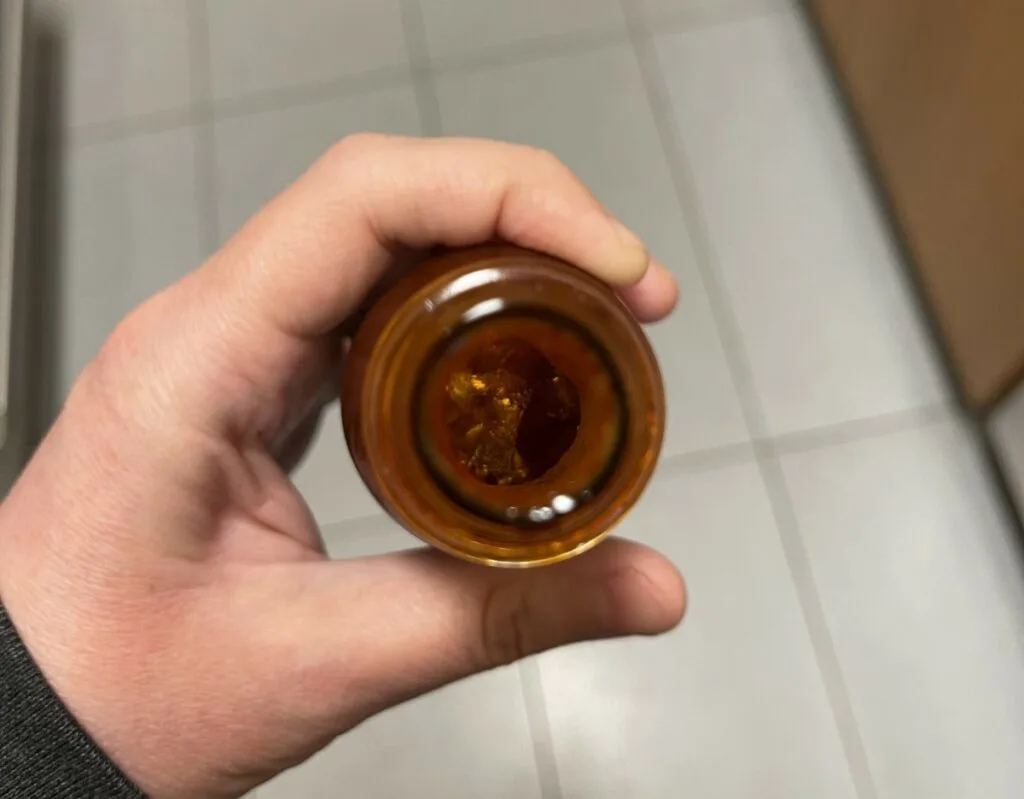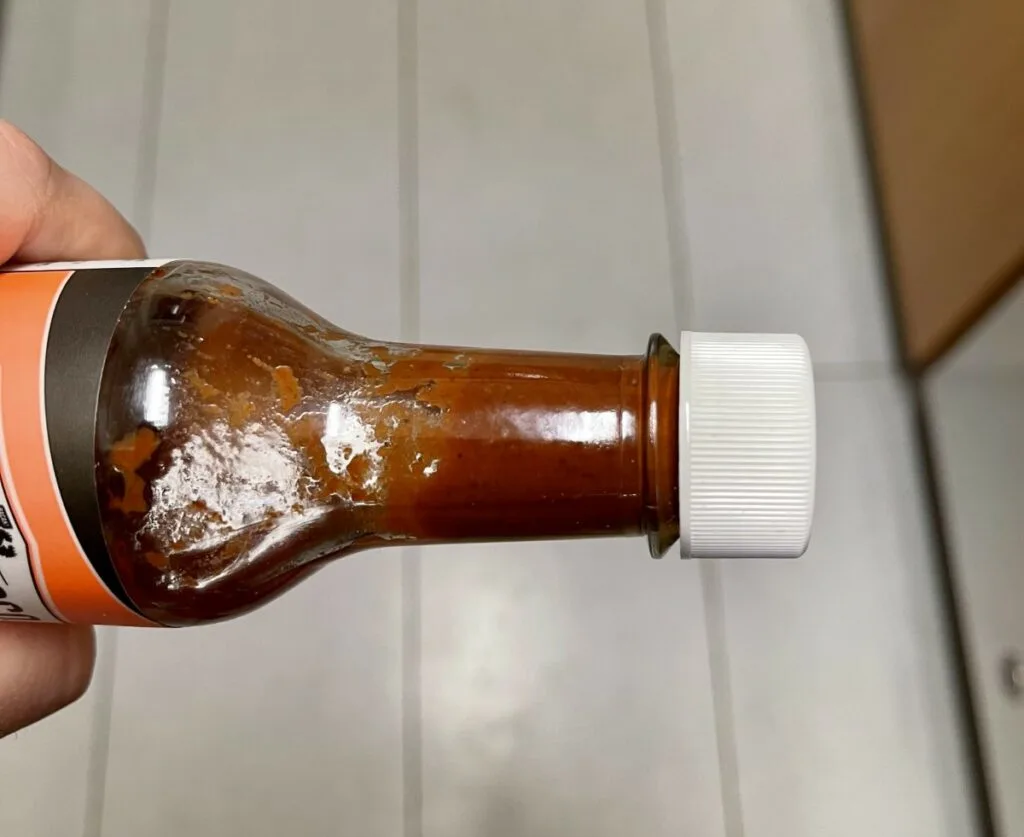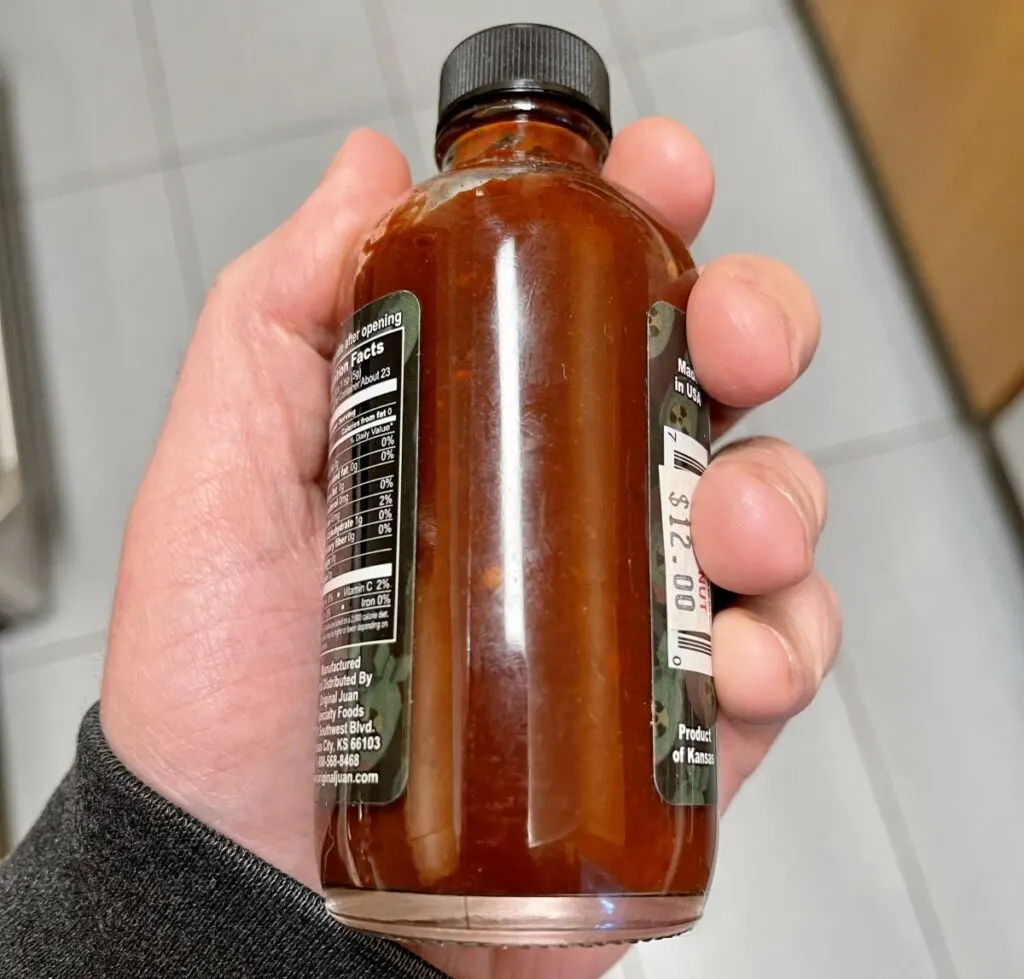If you love spicy food, you’re likely a hot sauce fan. Hot sauces can come in many flavors and range from mild to hot, allowing anyone to enjoy it. But why do some hot sauces turn brown and darken over time? And does this mean they’ve gone bad?
Some hot sauces turn brown and darken because of a natural process known as oxidation. When you expose the hot sauce to light, the chemical components of the sauce begin breaking down. But that doesn’t mean it’s gone bad. Hot sauce is resilient, and the color isn’t an accurate indicator of decay.
In this article, we’ll explain why your hot sauce turns brown, why that doesn’t mean it’s gone bad, how to tell if hot sauce has gone bad, and why you should refrigerate it. I’ll talk about how to stop your hot sauce from discoloring and going bad, too. So, if you are a hot sauce fanatic—please read on!

Why Does My Hot Sauce Turn Brown After a Few Months?
Hot sauce typically turns brown after a few months. It’s common, but you still may be wondering why it happens.
Hot sauce turns brown after a few months due to oxidation. When hot sauce comes into contact with light, chemical components inside it start to break down into other chemicals and byproducts. This reaction can cause discoloration, such as your hot sauce turning brown.
Some people will also say chili peppers turn brown in response to light—which is essentially a layperson’s explanation of the same process. But whether your hot sauce contains chili or not, it’s still very likely to lose its bright color over time. Other ingredients inside the bottle can also break down, leading to the same result even if your hot sauce contains no chili.
Oxidation can also create peroxides and hydroperoxides, which can cause funky tastes and smells in other foods. But most hot sauces are fermented—like many more acidic foods we eat, they’re already in a state of semi-decomposition. They already taste and smell funky, and their oxidizing is less critical to whether they’ve gone off.
All in all, hot sauce goes brown eventually, no matter what you do to prevent it. It’s a natural and normal process; you don’t need to fear it.
If Hot Sauce Turns Brown, Does That Mean It’s Bad?
When your hot sauce turns brown, your first thought might be that it’s expired. It’s not a good idea to eat spoiled food. But if hot sauce turns brown, does that mean it’s bad?
If hot sauce turns brown, that doesn’t mean it’s bad. Hot sauce’s pH and acidity make it hard for bacteria and other organisms to thrive in it. Its color does not determine whether it’s safe to eat—in most cases. In fact, they’re two very different processes.
Part of a hot sauce’s chemical makeup breaking down or its ingredients discoloring won’t make you sick. In other foods, we associate color changes with decomposition because often, it comes hand-in-hand with bacteria and mold. However, hot sauce is different. It’s tough for these things to grow in such a harsh environment, so your hot sauce is often safe despite its rusty, dark brown color.
If you decide to refrigerate your hot sauce, keep it out of sunlight and any light inside your fridge. Close and return the bottle to your fridge promptly after use. If you do so, it’s even less likely to go bad than it already is. We’ll talk about how to keep your hot sauce from discoloring and going bad later in this article.
To summarize, if you’re worried your sauce may have gone bad, it’s essential to inspect it for other, more accurate signs of decay than discoloration. A substance’s color is often a sign it’s expired, but with hot sauce, it’s not a good indicator of whether it’s safe to eat, and you might throw away a perfectly edible hot sauce if you only judge it by its color.

How Can I Tell If My Hot Sauce Has Gone Bad?
So, if hot sauce turning brown doesn’t mean it’s gone off, how does one tell when it’s time to throw the bottle away?
There are several ways to tell when your hot sauce has gone bad. The first is the presence of black spots. You may think these are pepper, but they’re mold. Another is the build-up of gasses in the bottle. Your sauce may also lose its spice or have a weird, unpleasant smell or taste.
As your bottle of hot sauce ages, you may notice that when you open it, you hear a pop as gasses rush out of the container. This sound is one sign that your hot sauce is getting on in age. Both fermentation and the process of chemicals breaking down create gasses, which increase the pressure inside the bottle. In extreme cases, it may even result in the container exploding. However, that’s very rare.
If your hot sauce shows any of the above signs of advanced decomposition, it’s best to throw it away. This is a good option if your hot sauce is more than a year old. Though many people say the sauce is good to keep for three years, there’s no set-in-stone, industry-standard date for when hot sauce goes bad.
Many manufacturers’ best guess is one year, and since they make the products, we’re inclined to believe them.
In a perfect world, there would be a firm expiration date, but unfortunately, not all foods go bad in a predictable way. In these cases, we must use our eyes and noses to ensure we aren’t eating expired food.

Will Hot Sauce Left at Room Temperature Turn Brown Faster?
After reading the above, you may wonder whether leaving your hot sauce out is a good idea. Will hot sauce left at room temperature turn brown faster?
When you leave hot sauce at room temperature, it will turn brown faster. Many people say it’s unnecessary to refrigerate hot sauce, but heat hastens the decomposition when a substance breaks down. So, leaving your open hot sauce out will only shorten its shelf life.
It’s common knowledge that food left out on the stove overnight likely grows bacteria, mold, and other things that can make you sick. Bacteria and mold grow faster in warm temperatures, and any chemical changes in your hot sauce will happen more quickly.
Not to mention, if your hot sauce is old and is already accumulating gasses in the bottle, it might even pop its top or explode because of internal pressure. While this is rare, it does happen, and it can both make a mess and hurt anyone standing nearby.
So, in short, you can leave your hot sauce outside in a cool, dark place, but it will likely last longer, and turn brown at a slower rate, if you store it in the fridge.

How Do I Stop My Hot Sauce from Turning Brown?
Even after reading the above, you may not like the idea of your hot sauce turning brown. You may be wondering if there’s any way to prevent it.
While you can’t stop your hot sauce from turning brown, you can greatly slow down the process by keeping the hot sauce in your refrigerator and keeping the bottle covered from any light source—including the light inside your fridge. You should also limit the time the bottle is left uncapped.
It’s best to use a three-pronged approach to create a harsher environment for bacteria and mold, which need warm temperatures, light, and air to survive and grow. It also addresses a common cause of oxidation and discoloration—light. You can do this by following these steps:
- Refrigeration
- Protect from light sources
- Limit exposing the sauce to air
These rules for handling your hot sauce will keep it from turning brown as well as from going bad. Cooler temperatures slow decomposition, and ensuring your sauce is resealed and put away in the fridge promptly after using it will help ensure that bacteria and mold don’t get a foothold.
Closing Thoughts
Hot sauces can be addictive—and a spicy choice to liven up almost any dish. However, just because your hot sauce has turned brown doesn’t necessarily mean it’s time to bin it.
Hot sauces turn brown due to light exposure and oxidation. However, discoloration doesn’t mean it’s gone bad; look for specks of mold, gas build-up, and spice loss. If you leave your hot sauce out at room temperature it will brown faster. To slow down this process, refrigerate your hot sauce well and protect it from light sources and exposure to air.
